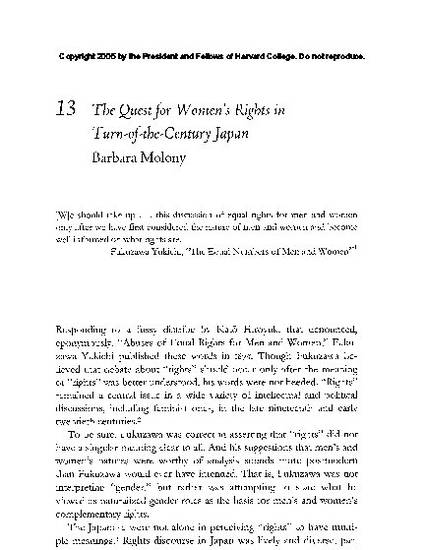
This chapter will discuss the goals of women's rights advocates and the meaning of their demands in the context of turn-of-the-century state and society formation. It examines women's rights discourses in late nineteenth-century periodicals, some of them directed to a female readership and some directed to a general, often male, audience. Sources include journals like Meiroku zasshi, Jogaku zasshi, Joken, Tokyo fujin kyofukai zasshi, and some regional publications. 25 Nineteenth-century advocates for women were, of course, of varying minds about the definition of “women’s rights,” but all agreed that women did not have rights at that time. Some argued for a communitarian inclusiveness reminiscent of the Rousseauian ideas espoused in the 1870s when neither ordinary men nor women had political rights. Others, inspired by Mill, stressed improved education as a way for women to gain the subjectivity (personhood or identity) that would make them eligible for rights. There were also those who believed inclusion must follow the elimination of patriarchal sexual privileges, such as those implied by polygamy, prostitution, and patrilineality.26 This chapter examines these different positions and their similarities and differences with late nineteenth- century arguments for expanding men’s inclusion in the state.
Kathleen Uno

Copyright 2005 by the President and Fellows of Harvard College. Do not reproduce.